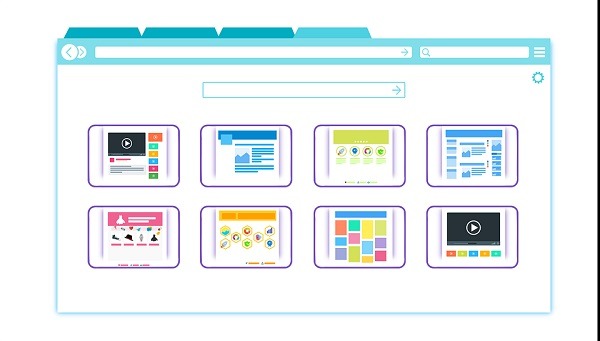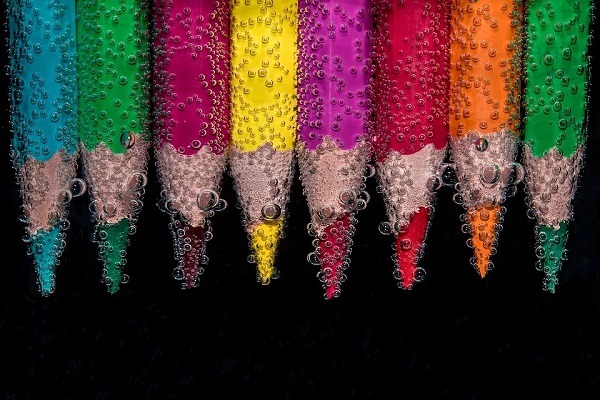You might have designed your website yourself. If you didn’t, you probably passed on a list of requirements to someone who did. On that list of requirements, we expect you’d identified and highlighted a series of priorities. The brand name had to be used repeatedly. The slogan had to be prominent. The content had to be well-positioned, and the menu had to be easy to use. Unless you’re one of a tiny number of enlightened web designers or builders, we suspect that you didn’t put a lot of emphasis on color.
That could be a costly mistake.
There’s more to color than just filling a background, or picking a neutral shade to ensure that your foreground text can be read easily. A lot of companies choose a color scheme that matches their logo, but unless the colors used in a logo were chosen selectively and well, that’s usually a mistake, too. Everything might look nice and symmetrical and balanced, but you could be sending out signals that you don’t want to send out. Every single color has psychological connotations, and every single human being picks up on them – whether they’re aware of them or not.
Let’s start with an obvious one. Red means danger. Red also means anger. It’s therefore almost never a great idea to launch a website with a red background unless you’re trying to sell a horror movie, or a white knuckle ride. Red is an aggressive color that gives off a feeling of hostility and will ensure that your potential customers spend less time on your website than you’d ideally like them to. We appreciate that almost nobody would choose to have a red website, but that alone proves our point. You know you shouldn’t use red, because you know it gives the wrong message – so what else shouldn’t you be using? Perhaps more importantly, what colors should you be using?
The answer to that question might not be as far away from red as you think. The perfect background shade for a sales website is purple. A deep shade of purple gives off a sense of class, elegance, and sophistication. It empowers people to spend money. If you want to see this effect in action, head to an online slots website like Dove Casino, and load up any of their classic or traditionally themed online slots. Count how many of them have purple backgrounds. The sole purpose of an online slots game, regardless of its theme, is to make money. A purple background shade will keep players in front of their screens spending money longer than any other. Online slots companies have spent a lot of time and money working this out, so if they’re using it, it’s a good sign that you should be using it for your own sales website, too.
Now we’ve identified the perfect background color for you; you need to dress up your buttons in a way that entices your customers to click on them. You probably won’t be surprised to hear that the perfect color for this is green. We’re heading back to traffic light theory for this – red means ‘stop,’ and green means ‘go.’ Whenever you’re taking a test online, a green highlight usually means you got the answer correct. We’ve been taught to associate green with positivity, and so when a customer sees a green button, they’re already hard-wired by nature to believe that clicking on it is the right thing to do. Going even further than that with psychology, green is also associated with wisdom. Your green ‘Call To Action’ buttons reassure your customers that they’re doing the right thing by clicking them, and also making them feel wise. That’s why green CTA buttons attract an average of 30% more clicks than buttons of any other color.
We appreciate that not every website and website owner has something to sell, so perhaps you’re wondering which color you should go for if you just want people to see or read whatever it is you have to say. If you think the answer is white, think again. Not only is white the most dull and over-used color on the internet, but white also implies purity. There’s nothing necessarily wrong with purity, but it’s not exactly exciting. People don’t expect to be inspired by reading black text against a white background, and as a result, they subconsciously become bored by it no matter how good your text is.
Forget about using white, and consider a gentle shade of blue instead. It’s a more engaging color and implies clarity. Just as a clear blue sky is a good thing, so is a clear blue background. A blue shade implies truth, which is a great choice if the purpose of your website is to present an argument or to reinforce a point of view. Just don’t go too heavy with the shading – when the blue becomes too dark, the tone becomes sad. Just as people don’t like to spend time on red websites because they’re hostile, they also don’t like to spend time on blue websites, because nobody likes to be sad.
We’ll leave you with a few parting words of advice. Black and gray are the colors of death, and only the moodiest of poets and heavy metal bands should use them in the background of a website. Yellow can suggest happiness, but can also imply childishness or cowardice (and that’s before we get into the fact that it’s almost impossible to read text of any color against a yellow background). Orange, like red, is a warning and is also harsh on the eyes. In almost every case, gentle pastel shades work better than deeper, more aggressive hues.
The success or failure of your website will not solely be decided by the color scheme you choose to dress it up in – your content will always be of more importance. Colors do matter, though, and some give you more chance of achieving your site’s aims than others. Choose yours wisely, and at the very least, make sure your CTA buttons are green!


